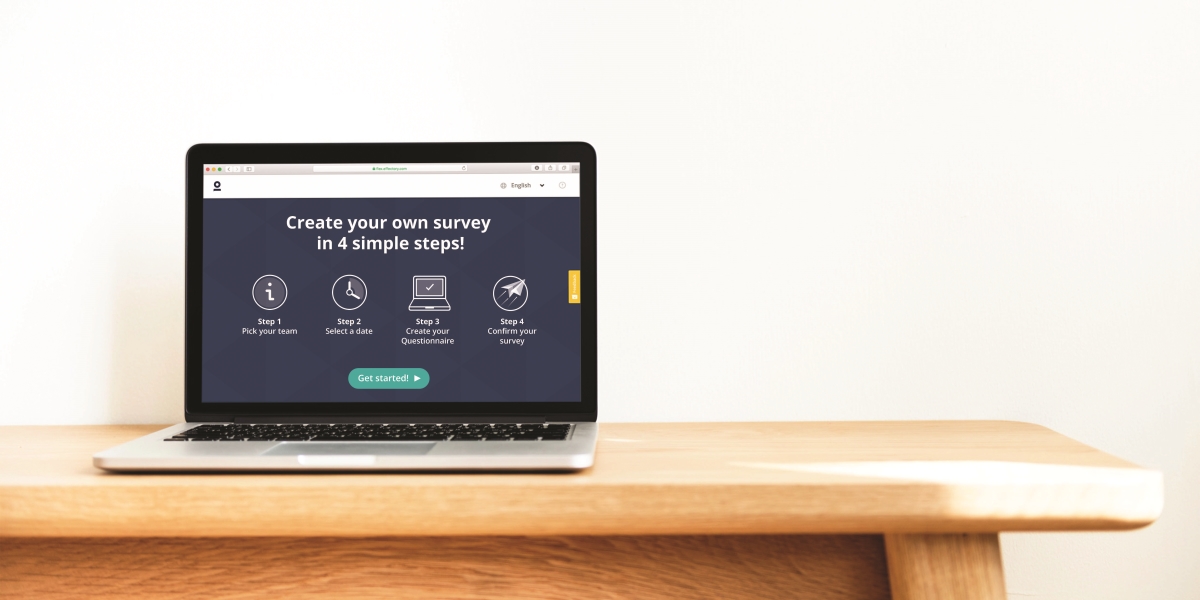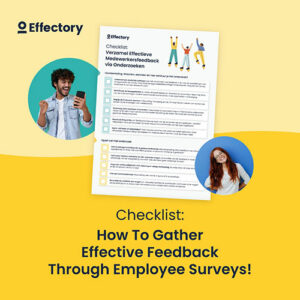Once you’ve prepared your employee survey strategy, as well as communicated the purpose and process, the next step is implementation. Step #3 in this survey series explores how to conduct employee engagement survey from the distribution, data collection, until the reporting associated with your employee engagement survey.
Step #3: How to conduct employee engagement survey? Implement your employee survey with impact

Conduct an employee survey: distribution
Whether you distribute the survey to every employee across your organization, or to selected teams will be determined by the purpose and timing of the project as well as the size of your organization. If, for example, you are conducting the employee survey in a small or medium-sized organization (less than 500 employees), you may find that distributing the survey and collecting feedback from every employee yourself is perfectly feasible.
In larger organizations and multinationals, it may be more practical to conduct a survey by outsourcing the set-up and implementation, particularly if you’re launching a survey across different locations.
Step #1: Preparing your employee survey (part 1)
If you are planning to conduct a survey using an online employee survey, check and test the system to ensure there are no glitches during the week leading up to launch date. Your people won’t be impressed if they receive an email addressed “Dear [NAME]”, for example. If your survey enables the option to save what has been filled in order to return to it at a later time, check that the data is in fact saved. Avoid frustrating your employees with a poorly executed process.
You can save a lot of time, and increase response rates, with an online survey, providing you have set up a user-friendly system. Impact is everything in workplace these days. Do not underestimate the importance of providing your employees with a well-designed and easy-to-use survey.
How to gather feedback from your employees
The definitive checklist for creating your employee engagement survey.
DownloadConduct which survey for whom?
If you work with multiple business units across international borders and with a variety of cultures, keep in mind when you conduct the survey the language and cultural differences that may impact how employees will experience the survey. You should therefore adapt survey questions to take into account the nature of the different parts of the organisation. By customizing surveys for each business unit, you will increase the employee commitment across the entire organization.
Response time
The 80/20 rule applies to survey response times, too. By far the largest response will be received during the first few days. Allowing two weeks for responses is usually enough, but if the response is initially disappointing, you can always extend the deadline by a week and encourage participation.
Data collection
With a digital survey, data collection can be simple. If you’re still using printed surveys, these should be returned to a freepost address. In view of the anonymity guarantee, we recommend that you designate a freepost address to be used specifically for the survey.
If printed surveys are distributed within the office building, provide return envelopes that can be placed in collection boxes at various locations. Doing so encourages a higher response rate, because employees are more likely to deposit their completed surveys in a collection box as soon as they have filled them in.
Step #1: Preparing your employee survey (part 2)
How will you recognize the various surveys returned by different departments? The bigger and more international your organization, the greater the need to draw up specific surveys tailored to specific audiences. You can distinguish a questionnaire in English from one in German at a glance, but how easily can you tell the difference between one from the marketing department and one from the sales department?
It is therefore always practical when you conduct a survey to mark the surveys with a specific code according to surveyed group, for example, per team. To maintain anonymity, write only the group name on the survey.
Step #2: Communicating your employee survey
Employee Engagement Survey
Run your engagement survey and gather feedback from your employees. Discover Effectory's engagement survey action planning template.
view solutionReporting
If you planned your employee engagement survey carefully from the outset, all data collected should be highly insightful and useful. Thus you should include all results in your initial report. But it is not only the results that count. Why was the survey conducted? What was the response rate? Include contextual information too. Do keep it concise. Be sure to substantiate the scores by including a statistical analysis of the results. Displaying answers to open questions is important to help you get deeper insights from the results.
When conducting a survey make the results visual. We recommend relying more on graphs and charts for example than on text heavy explanations. This allows you to see the progress at a single glance and facilitates benchmarking against subsequent surveys. Use as many colors or icons as necessary to visualize themes that score well and to indicate areas in which improvement is required. Pages full of text do not inspire reading, and so, will not inspire action either.
Try to divide the answers to open questions into as few categories as possible. When presenting the results for a group, make sure that you hold people’s attention. Visualize the results, using images as well as text. After all, a picture is worth a thousand words.
The survey pays for itself when stakeholders get reports that they can truly use to make impactful changes and improvements where needed. You should therefore attune the reports to the level of the various stakeholders and provide:
- an outline with highlights and main findings for the Board of Management;
- a detailed report for HR;
- an action-oriented report tailored for specific business units and/or the department managers.
Read more
Read the whole series on how to create engaging employee surveys:
- Step #1: Preparing your employee engagement survey (part 1)
- Step #1: Preparing your employee engagement survey (part 2)
- Step #2: Communicating your employee engagement survey
- Step #3: Implement your employee engagement survey with impact
- Step #4: Analysing your employee engagement survey
- Step #5: Taking action!
Book a free demo. See our solutions in action.
Effectory is Europe's Leading provider of Employee Listening Solutions. Schedule a product demo and discover how to enhance your employees' engagement.
Demo request
